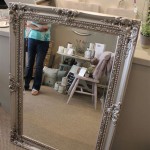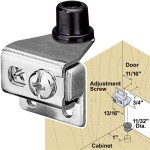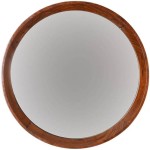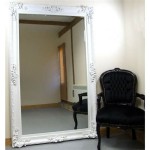Are Antique Mirrors Dangerous?
Antique mirrors hold a certain allure, often seen as windows to the past. Their intricate frames and aged surfaces add a touch of elegance and nostalgia to any space. However, beneath their aesthetic appeal, these relics may harbor hidden dangers. While not all antique mirrors pose a threat, certain factors can make them potentially hazardous, necessitating careful handling and consideration.
Lead-Based Paint
One of the most prevalent risks associated with antique mirrors is the presence of lead-based paint. Prior to the mid-20th century, lead was commonly used in paints and varnishes for its durability and vibrant colors. Antique mirrors, particularly those produced before this period, may contain lead paint on their frames or backing. Lead is a toxic metal that can cause various health problems, especially in children. Ingestion or prolonged exposure to lead-based paint can lead to developmental delays, learning disabilities, and other neurological issues. When handling antique mirrors, it is crucial to be mindful of any peeling or chipped paint, as these can release lead dust into the air. If you suspect your antique mirror contains lead-based paint, it is advisable to consult a professional for safe removal or encapsulation.
Mercury Backing
Another potential hazard associated with antique mirrors lies in their backing. Prior to the widespread use of silvering techniques, mercury was employed to create reflective surfaces. While mercury mirrors are often considered a coveted find by collectors, their use presents significant risks. Mercury is a highly toxic element that can cause severe health problems, including respiratory issues, neurological damage, and kidney failure. Exposure to mercury vapors, which can be released from antique mirrors over time, can be particularly dangerous. If you own an antique mirror with a mercury backing, it is essential to avoid disturbing it and consult a professional who specializes in mercury mirror restoration. They can safely remove the mercury backing and replace it with a modern, non-toxic alternative.
Structural Integrity
Apart from the potential dangers posed by lead and mercury, antique mirrors can also pose risks due to their age and handling. Over time, the mirror glass itself can become brittle and susceptible to cracking or shattering. This is particularly true for mirrors that have been subjected to harsh conditions, such as extreme temperatures, humidity, or vibrations. Additionally, the frame supporting the mirror may become weak or unstable, increasing the risk of collapse. Before hanging an antique mirror, it's crucial to inspect it thoroughly for any signs of damage or deterioration. If any concerns exist, it's advisable to have it professionally assessed and repaired to ensure its structural integrity and prevent potential hazards.
Handling and Maintenance Considerations
When dealing with antique mirrors, caution and proper handling are paramount. Always wear gloves when cleaning or moving these delicate objects, as contact with bare hands can transfer oils and dirt that can damage the surface. Avoid using harsh cleaning agents or abrasive materials, which can scratch or etch the glass. For cleaning, a soft, damp cloth is generally sufficient. If you notice any signs of damage, such as cracks, chips, or loose parts, it's best to refrain from further handling and consult a professional for restoration or repair. Regular inspections and preventative maintenance can help prolong the lifespan of your antique mirrors and ensure their safety.

How To Antique A Mirror Tutorial Jenna Sue Design

How To Antique A Mirror Tutorial Jenna Sue Design

Blog Who Is The Fairest Of Them All Rare Georgian Mirrors And Antique Looking Glasses

How To Antique A Mirror Tutorial Jenna Sue Design

Mercury Mirror

8 Diffe Types Of Antique Mirrors Upgradedhome Com

8 Diffe Types Of Antique Mirrors Upgradedhome Com

8 Diffe Types Of Antique Mirrors Upgradedhome Com

Mercury Mirror

How To Antique A Mirror Tutorial Jenna Sue Design








